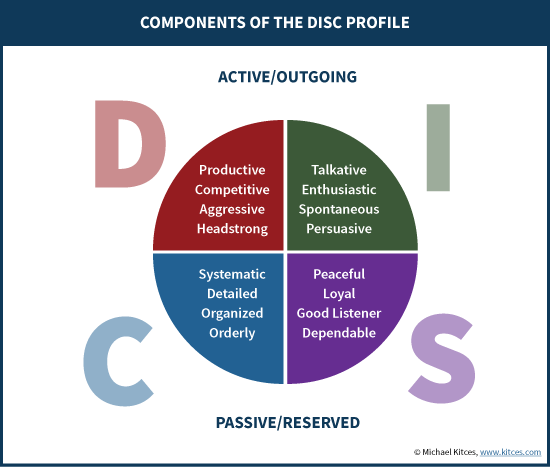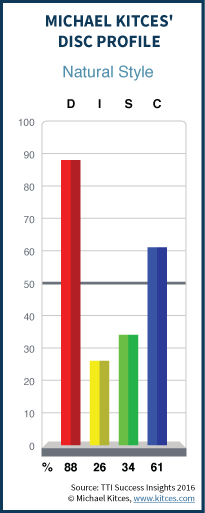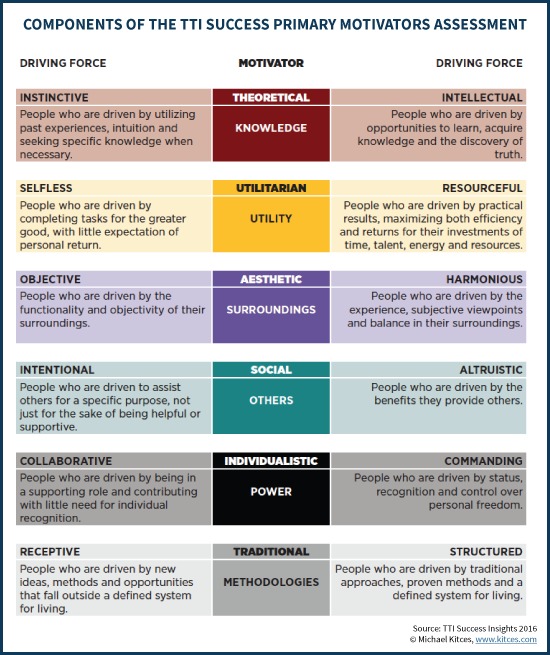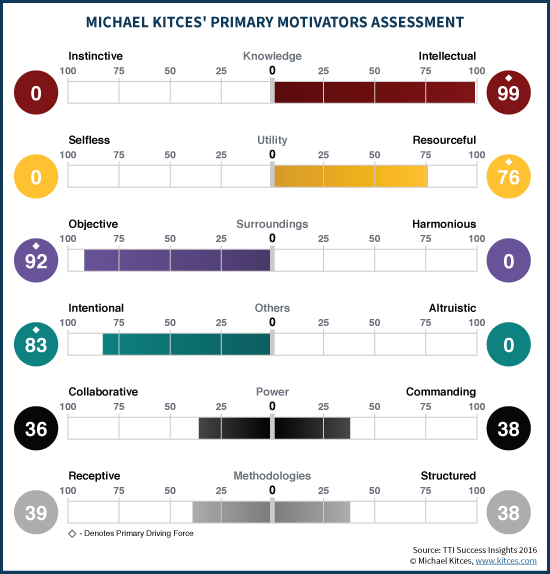Executive Summary
Even the most successful individual financial advisors can eventually hit a wall, where it’s simply not possible to make themselves more productive by growing a team to support them. The biggest advisory businesses bring together multiple successful advisors, who can each contribute their own unique (and hopefully, complementary) skillset to make the business bigger than what any one of them could achieve alone.
The caveat, however, is that just because two advisors are individually successful doesn’t mean that they will be a successful partnership. At best, different skillsets result in partners taking on more specialized roles in the business, and needing to learn to communicate well with people who have a very different perspective. At worst, the partners have fundamentally different long-term goals that eventually create untenable conflicts that cause the partnership to fail.
In an effort to avoid failed partnerships before they begin, former advisors Tanya Rapacz and Lisette Smith formed Partnership Resource, a niche consulting business that specifically works with financial advisors forming and sustaining partnerships. And their latest offering is a “Partnership Compatibility Assessment” tool, built to help advisors figure out up front whether they have sufficient alignment in what motivates them personally to be able to build a successful business together.
Of course, in the long run, there’s more to a successful partnership than “just” an alignment of business objectives and an ability to communicate and work through conflict. But given the number of financial advisor partnerships that I’ve witnessed come together and fall apart over the years, I suspect that better assessment tools like this will go a long way towards heading off the most problematic partnerships before they even begin, to the betterment of all involved!
Finding The “Right” Financial Advisor Partner?
Most financial advisors find a prospective business partner through their own network of colleagues – fee-only advisors meet other fee-only advisors at NAPFA conferences, investment-centric advisors meet other investment-centric advisors at custodian conferences, etc. The shared values of the common platform typically means an increased likelihood that fellow advisors there will be at least a reasonable match as a potential business partner.
However, an overlap of shared values alone isn’t sufficient for a strong and successful business partnership. In addition, it’s also vital to have complementary skillsets, and a similarity in long-term goals for the business that ensure interests are aligned as the business grows and the inevitable challenges arise.
In fact, the struggle to find compatible partners is so significant, it has spawned a niche consulting business serving financial advisors called Partnership Resource – offering both facilitation services to help partners determine if they actually are a good match and formulate a good partnership, and mediation services for existing partnerships that are having difficulties that need to be worked through (or at least need help dissolving the partnership in an orderly manner).
And for advisors considering whether to become business partners, their Partnership Compatibility Assessment provides an interesting framework to determine whether the partners will actually be a healthy long-term match, and how they can more effectively communicate.
Compatibility Assessment For A Financial Advisor Partnership
The compatibility assessment tool from Partnership Resource is actually a combination of two separate assessment tools that each prospective partner goes through: the well-known DISC behavioral profile, and a “Motivators” analyzer called “Driving Forces”.
The DISC Profile
The DISC Profile evaluates people on four core dimensions based on where they place their focus and emphasis: their Dominance (emphasis on accomplishing results and the bottom line), Influence (emphasis on persuading others and relationships), Steadiness (emphasis on cooperation and dependability), and Conscientiousness (emphasis on quality, accuracy, and competency).
Those who score highly in the D (Dominance) and C (Conscientiousness) domains tend to be more Task oriented, while those who score higher on I (Influence) and S (Steadiness) tend to be more people oriented. Similarly, the D and I domains tend to be more active and outgoing, while the C and S domains are more passive and reserved.

 For instance, my DISC results are shown to the right, indicating that I am very task oriented, and tend to be outgoing and take initiative (perhaps no surprise for any readers here!). However on the “influencing” domain, I’m more likely to be analytical and factual than try to be overtly persuasive and convincing, and my low “steadiness” score suggests that I’m ultimately more eager and restless than patient and passive (again probably no surprise for any readers who have watched the constant development and iteration of this website!).
For instance, my DISC results are shown to the right, indicating that I am very task oriented, and tend to be outgoing and take initiative (perhaps no surprise for any readers here!). However on the “influencing” domain, I’m more likely to be analytical and factual than try to be overtly persuasive and convincing, and my low “steadiness” score suggests that I’m ultimately more eager and restless than patient and passive (again probably no surprise for any readers who have watched the constant development and iteration of this website!).
The relevance of this in the context of prospective partners is that it helps to reveal how the partners would likely engage with each other and work together (and how to communicate more effectively), particularly for those who haven’t worked together (much) in the past and aren’t as familiar with each other’s work styles. For example, these results would suggest that making me a manager of a team of people in the business is not a good match for my abilities, but that I would be a good innovator for the business who can seek out logical solutions and help initiate them. But don’t ask me to manage those new initiatives on an ongoing basis once they’re off the ground (low Steadiness score), because I’d rather be moving on to the next thing!
In turn, these results also begin to highlight where a potential partner could either be complementary, or even conflicting. Since my weakness is in managing people and teams (low Influencing score), any partner I work with would either need to bring that skillset to the table, or as partners we would need to be prepared to hire managers sooner rather than later to ensure that the team is managed appropriately in the business. Similarly, because I am often restless and wanting to move on to the next interesting opportunity (low Steadiness score), finding a partner who is (highly) steady and willing to maintain the day-to-day management of the business would be a positive. On the other hand, such a partner could find it extremely frustrating to work with me, given that by the time he/she finally creates a steady workflow and process for a task, I may not even want to do it anymore because I’m on to the next thing!
Alignment Of Motivator Driving Forces
Notably, one of the fundamental tensions in finding business partners with complementary skillsets is that the “opposing” skills that support one another are also the differences in work style that can drive each other crazy. To be able to work through such conflicts, it’s ultimately crucial that the partners can align towards the same long-term goals, and that they have the same underlying motivators.
In turn, this is where the second part of Partnership Resource’s Compatibility Assessment becomes relevant. Their “Motivators” tool helps partners to understand what their intrinsic motivators are. The better aligned the partners are, the easier it will be for them to come to consensus on difficult issues. The more different they are, the more likely subsequent conflict will be.
The Motivators tool, developed by TTI Success Insights, ultimately breaks down motivations into six core dimensions: Knowledge, Utility, Surroundings, Others, Power, and Methodologies. In turn, each of these dimensions has opposing driving forces. In the Knowledge domain, some are driven by opportunities to learn and acquire knowledge (“Intellectual”), while others prefer to learn from experience and apply their intuition (“Instinctive”). In the Utility domain, some are motivated to complete tasks simply to help others with little expectation of return (“Selfless”), while others are driven to achieve more ‘practical’ results with measured outcomes (“Resourceful”). In the Social domain, some are motivated by helping others (“Altruistic”), and others are more driven to assist others for a specific purpose that advances their own goals as well (“Intentional”). Ultimately, two opposite motivators across each of six dimensions leads to 12 possible driving forces.

The significance of the driving forces in the context of prospective partners is that they help to explain how goals are ultimately formulated – and highlights where prospective conflicts may occur. Of the 12 possible Driving Forces, individuals will have four that are their core motivators. Their “deal-killers” that are essential for motivation and focus.
Having gone through the exercise myself, the results show that my primary four driving forces are Intellectual, Objective, Intentional, and Resourceful.

Perhaps not surprising given this blog, the Intellectual drive to learn and gain knowledge is a driving force for me, but the Driving Forces assessment also shows that while this blog produces a high volume of free content to help advisors, it is not a purely selfless and altruistic exercise. Instead, it is done the way it is because to me, it’s important to not just be selfless but also to drive measurable results and impact, and to produce content in an intentional manner that can also help me grow a business (or now a series of businesses serving advisors and consumers!). I do have many mouths to feed at home, and ensuring that what I do helps our planning community and supports my family is very important to me!
In the context of working with a potential partner, though, these driving forces help to illustrate both alignment, and areas of potential conflict. For instance, while I give away a great deal for free, working with a purely altruistic partner would likely create conflict, as if it undermines my ability to provide financial stability and support for my family, I would not be happy with the outcome! Similarly, if I had a partner who strongly preferred to make decisions instinctively rather than being driven by data, we would likely have routine conflicts about every major decision for the business.
In fact, the consultants at Partnership Resource suggest that of the 4-out-of-12 driving forces that will be primary motivators for any individual, if prospective partners don’t have at least 2 out of those 4 in alignment, they will probably face a lot of potential conflict. (And for existing partners already in conflict, this may help to explain why!)
The Financial Advisor Partnership Compatibility Process
Like other kinds of assessment tools that financial advisors might use in their business, the key point in the context of partners in particular is to recognize that differences in behavior and work styles are a challenge that can be solved with better communication (and understanding each other’s communication style), but that fundamental differences in primary motivators are significantly harder to reconcile and are more likely to lead to conflict that can undermine or entirely disintegrate a business partnership over time.
Accordingly, perhaps the biggest opportunity in using a tool like Partnership Resource’s “Partnership Compatibility Assessment” is for those who are considering a potential partnership to go through the process up front, before the business is even created. Doing so can help to reveal from the start whether the partnership will struggle due to fundamental differences in the primary motivators of the partners. And even if the partners are aligned, the assessment provides an opportunity to better understand each other’s behavioral styles to improve their communication (recognizing that different DISC profiles prefer to take in information in different ways).
A simplified version of the assessment tool is available for free on the Partnership Resource website (which provides a basic 4-page compatibility report), and you can contact [email protected] to request the full version (with all the detailed DISC and Motivators results for each partner, and their combined compatibility report), which has a cost of $150/partner to “just” take the assessment, or $500/partner for each to also get a 1-hour phone debrief regarding both their individual and joint results and identify prospective issues to consider for partners who are interested in working together in the future. For those who are interested, readers of the Nerd’s Eye View blog can go through their Partnership Compatibility Assessment for a 10% discount (just indicate you're a Nerd's Eye View reader when you contact Partnership Resource).
Notably, Partnership Resource provides additional Facilitation services for partners who want to more fully establish their partnership agreement and have a facilitated negotiation of the key issues (billed at $1,400 for a ½ day on site or $2,800 for a full day). The consultants can also embody all of this into a “Partnership Constitution” that becomes the guiding document for roles, communication, and business decision-making in the future for a separate cost.
Alternatively, for partnerships that already exist and are struggling with some partner conflict that they’re having trouble managing, going through the Partnership Compatibility Assessment may be a helpful exercise to better understand the sources of the conflict – is it “just” a communication issue (materially different DISC profiles), or a fundamental difference in primary motivators that are causing conflict because the partners are pursuing different goals? Here again, Partnership Resource does provide further Mediation services for partnerships that need to work through substantive problems, and/or may even need to dissolve the partnership if the differences are irreconcilable.
Ultimately, though, the fundamental point is simply to recognize that while a good partnership can grow a business larger than either partner can individually, even well-intentioned people who are very successful individually will not always turn out to be good partners. In some cases, it’s simply a matter of understanding how to better communicate with each other to work through the inevitable business challenges and conflicts that arise, but if partners are misaligned in their fundamental motivators for the business in the first place, the conflicts may be untenable. Which means a Partnership Compatibility Assessment upfront can avoid a great deal of business pain later!
You can see further information about Partnership Resource on their website. To go through the full Partnership Compatibility Assessment, contact Tanya Rapacz and Lisette Smith at [email protected] and indicate that you’re a Nerd’s Eye View reader to receive the 10% discount. Nerd’s Eye View does not have any financial affiliation or other business relationship to Partnership Resource.





Thank you for your post!This instructional exercise is breathtaking! Loads of extraordinary data including, Business Consulting Services organizations have a high agitate rate. A few specialists guarantee that they have never lost a customer, If a client doesn’t reestablish their agreement, I think about that as a lost customer. That implies they may pass up a major opportunity for their business.